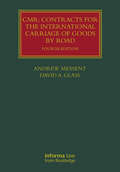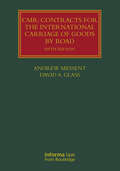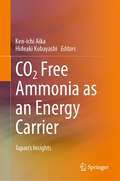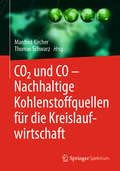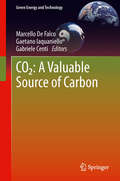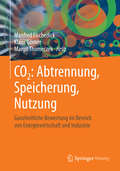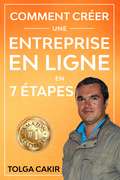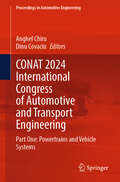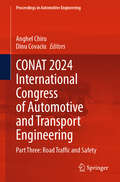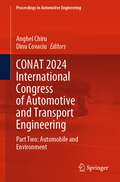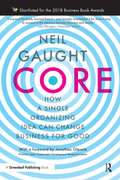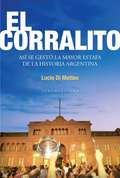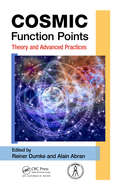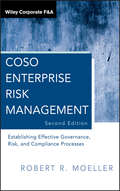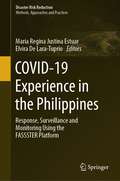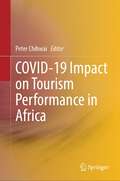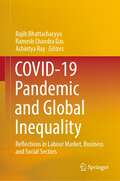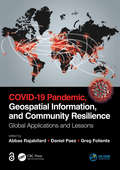- Table View
- List View
CMM versus Agile: Methodology Wars in Software Development
by Robert D. AustinA CIO decides whether to adopt the "Capability Maturity Model" (CMM) within her IT department. The decision is proving surprisingly controversial; some of her best developers prefer adopting an "agile" methodological approach instead. Compares and contrasts the CMM and agile methodologies, such as Kent Beck's eXtreme Programming.
CMR Enterprises
by Das Narayandas Mary Neuner CaravellaSam Marcus recently purchased a small cabinet-making company, and is looking for dramatic growth. The company competes in commercial and residential construction markets; shortly after the acquisition, the company gains a large new residential customer. The case traces the changes made at the company and how the relationship with this customer begins to deteriorate. At the end of the case, Marcus must decide whether to fix or end the relationship.
CMR: Contracts for the International Carriage of Goods by Road (Lloyd's Shipping Law Library)
by Andrew Messent David GlassNow in its fourth edition, this hallmark text provides a comprehensive, article-by-article guide to the workings of the CMR Convention, as incorporated into English Law by the Carriage of Goods by Road Act 1965. This new edition is fully up to date with all major UK case law, plus major developments in the interpretation of the Convention in the case law of other Contracting States. Furthermore, the book includes expert guidance on the amendments introduced by the additional protocol concerning the electronic consignment note of 2008. The relationship between CMR and potentially conflicting legislation, in particular the Judgments Regulation of 2001 and the Judgments Regulation (recast) of 2012, are also usefully examined. Praised as well-written and extremely accessible, Messent and Glass offer a level of expert detail and referencing that cannot be found elsewhere. This work is an invaluable reference tool that can be used by the busy legal practitioner, and by other road haulage industry professionals, in any contracting state, to solve the issues that confront them in daily practice. It is also an indispensable guide for academics and students of the international carriage of goods by road.
CMR: Contracts for the International Carriage of Goods by Road (Lloyd's Shipping Law Library)
by Andrew Messent David A. GlassNow in its fifth edition, this hallmark text provides a comprehensive, article-by-article guide to the workings of the CMR Convention, as incorporated into English Law by the Carriage of Goods by Road Act 1965.Fully revised throughout, the book offers a complete update of relevant English cases, including the latest Supreme Court decision on the subject, and draws in major developments in the interpretation of the Convention in the case law of other Contracting States. Furthermore, this new edition incorporates two key developments to ensure the book’s continuing currency and authority. Firstly, it reviews the operation of the current law following the UK’s ratification of the Additional Protocol to the Convention on the Contract for the International Carriage of Goods by Road (CMR) 2008, which provides for the recognition and use of electronic consignment notes, ie e-CMR. Secondly, it addresses the changes consequent on Brexit which affect aspects of the general legal context and whose relationship with the rules of CMR require re-examination, principally in respect of the law governing issues of choice of law, jurisdiction and enforcement of court judgments. Clearly and accessibly written, Messent and Glass continue to offer a level of expert detail and referencing that cannot be found elsewhere.The book is an invaluable reference tool that can be used by the busy legal practitioner, and by other road haulage industry professionals, in any contracting state, to solve the issues that confront them in daily practice. It is also an indispensable guide for academics and students of the international carriage of goods by road.
CO2 Free Ammonia as an Energy Carrier: Japan's Insights
by Ken-Ichi Aika Hideaki KobayashiThis book describes important findings in intensive studies conducted in Japan on ammonia as an energy carrier. It illustrates an advanced solar-heat capture system and storage materials at 600°C and hydrogen production with SOECs and a new IS method through the use of heat. New industrial ammonia catalysts and a demonstration process that started running in Fukushima are also introduced. Advanced ammonia decomposition catalysts and the process that were developed for use by the hydrogen station are presented. An advanced direct ammonia fuel cell was developed and the base data are shown. The book explains that ammonia is used as a fuel for industrial applications because its burning can be controlled without emitting extra NOx in the gas turbine and the real coal co-fired power plant. These breakthroughs have made a strong impact in the world as a practical technology for CO2 reduction. Also provided here are the scientific and industrial backgrounds as well as the environmental assessment and economic evaluation for the future.This book will be helpful for all who are interested in energy technology—researchers, students, and strategy planners at companies and in the government.
CO2 und CO – Nachhaltige Kohlenstoffquellen für die Kreislaufwirtschaft
by Thomas Schwarz Manfred KircherKlimaschutz und Rohstoffwandel erfordern für die Chemie- und Treibstoffindustrie neue, nachhaltige Kohlenstoffquellen. Tatsächlich erreichen Verfahren, die kohlenstoffhaltige Emissions- und Gasströme industriell verwerten, die industrielle Praxis. Sie werden auch in Europa einen wichtigen Beitrag zur Senkung der Kohlenstoff-Emission und für den Einstieg in eine echte Kohlenstoff-Kreislaufwirtschaft leisten.Dieses Buch beschreibt die Grundlagen chemischer und biotechnologischer Verfahren zur Umsetzung von CO und CO2 zu Chemikalien und Treibstoffen und geht auf das Potential für die produzierende Wirtschaft, Industriestandorte und Regionen ein:Welche Emissions- und Gasströme bieten Rohstoffpotential? Welche Verfahren werden bereits implementiert, werden geprüft und sind in Entwicklung?Welche Produkte können aus gasförmigen Kohlenstoffquellen hergestellt werden?Wie können Kohlenstoff abgebende und verbrauchende Industrien zu neuen Wertschöpfungsketten verknüpft werden?Wie sehen die regulatorischen Rahmenbedingungen aus?Wie sieht der ökologische Fußabdruck aus?Wie tragen die neuen Verfahren zur regionalen Wirtschaft bei und unterstützen damit die gesellschaftliche Akzeptanz?
CO2: A Valuable Source Of Carbon (Green Energy and Technology)
by Gaetano Iaquaniello Marcello De Falco Gabriele CentiAs the annual production of carbon Dioxide (CO2) reaches 30 billion tones, the growing issue of the greenhouse effect has triggered the development of technologies for CO2 sequestration, storage and use as a reactant. Collecting together the reports of the Congress at University of Rome (Campus Bio-medico) held 16th April 2012, CO2: A Valuable Source of Carbon presents and discusses promising technologies for the industrial exploitation of CO2. Divided into two parts, the current technology is evaluated and summarized before European and national projects are presented. The focus on CO2 recovery, particularly in value-added production, proposes applicable methods to develop sustainable practices and even to mitigate greenhouse gas emission from large-scale fossil fuels usage. Including current data and real-world examples, CO2: A valuable source of carbon provides students, engineers, researchers and industry professional with up-to-date material and potential areas for development and research.
CO2: Ganzheitliche Bewertung im Bereich von Energiewirtschaft und Industrie
by Manfred Fischedick Klaus Görner Margit ThomeczekAusgehend von den naturwissenschaftlichen und technischen Grundlagen werden in dem Band Technologien zur Abscheidung, Speicherung und Nutzung von klimasch#65533;dlichem CO2 vorgestellt. Der Stand der Technik wird dargelegt, die Energiebilanzen verschiedener Techniken verglichen, rechtliche, wirtschaftliche und gesellschaftspolitische Aspekte beschrieben und dar#65533;ber hinaus die Standpunkte der verschiedenen Interessengruppen vorgestellt. Um sachlich informieren zu k#65533;nnen, legen die Autoren die Kriterien f#65533;r die Bewertung der einzelnen Sichtweisen offen.
COFCO
by Natalie Kindred David E. BellIn 2015, COFCO, China's state-owned agribusiness giant, was working to protect China's food security (a key national security priority) by extending its control of the global food system through overseas acquisitions. At the same time, COFCO sought to grow its market share in China's fiercely competitive branded foods market. To help achieve these goals, COFCO Chairman Frank Ning was driving internal reforms to make COFCO's management more competitive, innovative, and globally experienced. This case allows for a discussion of the Chinese marketplace and the evolving approach to business structures taken by the Chinese government. COFCO is the leading food company in China, and we can see through the case the hurdles faced in transitioning a company from pursuing mostly social objectives to mostly profit making. Finally, the case is a useful vehicle for discussing the question of whether and how China can feed itself. Efficient and reliable sourcing of food from abroad is evidently an increasing, and urgent, priority.
COME TROVARE LAVORO RAPIDAMENTE E FACILMENTE
by Simona Trapani Bernard LevineSe non ottieni mai risposte alle tue candidature di lavoro ... Se sei frustrato per i numerosi rifiuti... Allora questo libro sarà il miracolo della tua vita. Permettimi di aiutarti e di mostrarti un modo molto migliore per trovare un lavoro. Non abbiamo intenzione di fare ciò che ogni fanno tutti gli altri per cercare di ottenere un posto di lavoro. Percorreremo un percorso molto diverso per farti ottenere un posto di lavoro. Se segui i segreti di questo libro, riuscirai a trovare un lavoro rapidamente e facilmente.
COMMENT CRÉER UNE ENTREPRISE EN LIGNE EN 7 ÉTAPES (1 #1)
by Tolga CakirCe livre révélera des stratégies pratiques conçues pour aider les lecteurs qui voudraient lancer une entreprise en ligne mais ne savent pas par où commencer. Tolga Cakir a écrit ce livre comme le premier volume qui est dans un langage simple visant à aider les lecteurs non professionnels du monde entier.
CONAT 2024 International Congress of Automotive and Transport Engineering: Part One: Powertrains and Vehicle Systems (Proceedings in Automotive Engineering)
by Anghel Chiru Dinu CovaciuThese 3-volume proceedings includes selected and reviewed papers from CONAT 2024 – the 13th edition of the International Congress of Automotive and Transport Engineering, held in Brasov, Romania, in November 2024. Authors are experts from research, industry and universities coming from around the world. The papers are covering the latest developments in automotive vehicles and environment, advanced transport systems and road traffic, advanced powertrain systems, new materials, manufacturing technologies and logistics, accident research and analysis and innovative solutions for automotive vehicles. The congress is organized by SIAR (Society of Automotive Engineers from Romania) in cooperation with SAE International and Transilvania University of Brasov. This first volume presents the papers on Advanced Powertrain Systems, Advanced Engineering Methods as well as Vehicle Dynamics and Vehicle Systems.
CONAT 2024 International Congress of Automotive and Transport Engineering: Part Three: Road Traffic and Safety (Proceedings in Automotive Engineering)
by Anghel Chiru Dinu CovaciuThese 3-volume proceedings includes selected and reviewed papers from CONAT 2024 – the 13th edition of the International Congress of Automotive and Transport Engineering, held in Brasov, Romania, in November 2024. Authors are experts from research, industry and universities coming from around the world. The papers are covering the latest developments in automotive vehicles and environment, advanced transport systems and road traffic, advanced powertrain systems, new materials, manufacturing technologies and logistics, accident research and analysis and innovative solutions for automotive vehicles. The congress is organized by SIAR (Society of Automotive Engineers from Romania) in cooperation with SAE International and Transilvania University of Brasov. This third volume presents the papers on Advanced Transport Systems, Accident Research and Analysis, and some related to History of Automotive Technics and Technology.
CONAT 2024 International Congress of Automotive and Transport Engineering: Part Two: Automobile and Environment (Proceedings in Automotive Engineering)
by Anghel Chiru Dinu CovaciuThese 3-volume proceedings includes selected and reviewed papers from CONAT 2024 – the 13th edition of the International Congress of Automotive and Transport Engineering, held in Brasov, Romania, in November 2024. Authors are experts from research, industry and universities coming from around the world. The papers are covering the latest developments in automotive vehicles and environment, advanced transport systems and road traffic, advanced powertrain systems, new materials, manufacturing technologies and logistics, accident research and analysis and innovative solutions for automotive vehicles. The congress is organized by SIAR (Society of Automotive Engineers from Romania) in cooperation with SAE International and Transilvania University of Brasov. This second volume presents the papers on the Automobile and Environment as well as New Materials and Manufacturing Technologies.
CORE: How a Single Organizing Idea can Change Business for Good
by Neil GaughtCORE is shortlisted for the Best Business Book Awards in the Engaging Change category. At the core of the world's most admired businesses lies a powerful Single Organizing Idea. These organizations deliver sustainable economic and social benefit; they unite people, attract investment, inspire innovation, pioneer new efficiencies, and enjoy positive reputation. Such businesses are admired but they remain a rare breed. Though the tides of change are engaging the minds of business leaders, most are still trapped behind their brands and an approach to corporate social responsibility that is out of step with a connected society that increasingly questions 'who' these businesses really are and what drives their purpose. This book is about how businesses can adopt a Single Organizing Idea and, more importantly, why they have to. Drawing on stories and case studies, and with reference to the UN's Sustainable Development Goals, its no-nonsense approach sets aside the ideals to confront the realities of business reform. It demonstrates the power and potential that a Single Organizing Idea can bring to any business prepared to take its head out of the sand and proactively respond to today's challenges.
CORRALITO, EL (EBOOK)
by Lucio Di MatteoEl Corralito no fue una catástrofe natural e inevitable, sino el resultado de un esquema económico inviable, un gobierno sin apoyos partidarios y un gabinete de ministros paralizado. Un sistema pensado como respirador artificial de la Convertibilidad, que ya estaba muerta. A diez años de aquella decisión que restringió la libre disposición del dinero que los argentinos tenían en sus cuentas bancarias, este libro cuenta por primera vez cómo se vivieron desde el interior del Gobierno esos días clave, cómo se gestó la última gran estafa al pueblo argentino y cuál fue el verdadero objetivo de ese manotazo de ahogado. Con datos nunca antes revelados, El Corralito repasa el dubitativo comienzo de la gestión delarruista, la discutida llegada de Cavallo al Gobierno, el abandono del FMI, la ruptura de la Alianza, el entorno presidencial y la represión final del 19 y 20 de diciembre.
COSCO: Implementing Sustainability
by Christopher Marquis Juelin Yin Dongning YangIn January 2005, China Ocean Shipping (Group) Company (COSCO) announced it would join the United Nations Global Compact (UNGC). At that time, COSCO initiated sustainability reporting practices in line with the UNGC, and over the next six years these efforts evolved into an information technology platform integrating all the company's sustainability processes and indicators. In fall 2011, the company's leadership considered the following strategic questions: To what extent should COSCO refer to international and domestic sustainability standards in the platform framework? How far should COSCO go in promoting the sustainability system as a stand-alone product? What were the next steps in sustainability reporting, and should COSCO try to attain even higher reporting standards in the future? Moreover, related issues facing the company included: What would be the value in reaching higher sustainability and reporting standards, and how would internal and external stakeholders react? What challenges lay ahead for the consistent implementation of higher standards across COSCO's subsidiaries?
COSMIC Function Points: Theory and Advanced Practices
by Alain Abran Reiner DumkeDesigned to conform to the ISO/IEC standard 14143, the Common Software Measurement International Consortium (COSMIC) Function Point method has become the major estimation technique based on international standards for building software-intensive systems. COSMIC Function Points: Theory and Advanced Practices supplies a cutting-edge look at current a
COSO Enterprise Risk Management: Establishing Effective Governance, Risk, and Compliance Processes (Wiley Corporate F&A #560)
by Robert R. MoellerA fully updated, step-by-step guide for implementing COSO's Enterprise Risk Management COSO Enterprise Risk Management, Second Edition clearly enables organizations of all types and sizes to understand and better manage their risk environments and make better decisions through use of the COSO ERM framework. The Second Edition discusses the latest trends and pronouncements that have affected COSO ERM and explores new topics, including the PCAOB's release of AS5; ISACA's recently revised CobiT; and the recently released IIA Standards. Offers you expert advice on how to carry out internal control responsibilities more efficiently Updates you on the ins and outs of the COSO Report and its emergence as the new platform for understanding all aspects of risk in today's organization Shows you how an effective risk management program, following COSO ERM, can help your organization to better comply with the Sarbanes-Oxley Act Knowledgeably explains how to implement an effective ERM program Preparing professionals develop and follow an effective risk culture, COSO Enterprise Risk Management, Second Edition is the fully revised, invaluable working resource that will show you how to identify risks, avoid pitfalls within your corporation, and keep it moving ahead of the competition.
COVID-19 Experience in the Philippines: Response, Surveillance and Monitoring Using the FASSSTER Platform (Disaster Risk Reduction)
by Maria Regina Justina Estuar Elvira De Lara-TuprioThis book provides an overview of the extensive work that has been done on the design and implementation of the COVID-19 Philippines Local Government Unit Monitoring Platform, more commonly known as Feasibility Analysis of Syndromic Surveillance Using Spatio-Temporal Epidemiological Modeler for Early Detection of Diseases (FASSSTER). The project began in 2016 as a pilot study in developing a multidimensional approach in disease modeling requiring the development of an interoperable platform to accommodate input of data from various sources including electronic medical records, various disease surveillance systems, social media, online news, and weather data. In 2020, the FASSSTER platform was reconfigured for use in the COVID-19 pandemic. Using lessons learned from the previous design and implementation of the platform toward its full adoption by the Department of Health of the Philippines, this book narrates the story of FASSSTER in two main parts.Part I provides a historical perspective of the FASSSTER platform as a modeling and disease surveillance system for dengue, measles and typhoid, followed by the origins of the FASSSTER framework and how it was reconfigured for the management of COVID-19 information for the Philippines. Part I also explains the different technologies and system components of FASSSTER that paved the way to the operationalization of the FASSSTER model and allowed for seamless rendering of projections and analytics. Part II describes the FASSSTER analytics and models including the Susceptible-Exposed-Infected-Recovered (SEIR) model, the model for time-varying reproduction number, spatiotemporal models and contact tracing models, which became the basis for the imposition of restrictions in mobility translated into localized lockdowns.
COVID-19 Impact on Tourism Performance in Africa
by Peter ChihwaiThis book examines the impact of the COVID-19 pandemic on tourism performance in Africa. It covers a wide range of topics that will interest academic readers and researchers, including the effects of COVID-19 on various segments of the tourism sector. The aim is to provide a deeper understanding of the damage caused by the pandemic, enriching future research based on the findings and conclusions presented in the book. The research presented in this book is new and original, representing different perspectives from across Africa's 52 countries. It offers valuable insights for the business world on how to adapt and adopt communication strategies during crises such as COVID-19. Themes such as innovation, service quality, and continuous improvement during the pandemic are explored, providing lessons that can benefit the tourism industry in navigating similar challenges in the future. Additionally, the book discusses the future of tourism, presenting various perspectives on what the future holds for the tourism industry. This provides an exciting platform for tourism stakeholders to learn about the future of the sector from diverse and knowledgeable angles. The unique perspectives offered, especially those from Africa, will appeal to a wide and diverse audience, including ecotourists, educational tourists, adventure tourists, governments, academics, and other stakeholders.
COVID-19 Pandemic and Global Inequality: Reflections in Labour Market, Business and Social Sectors
by Ramesh Chandra Das Rajib Bhattacharyya Achintya RayThe book intends to capture the most critical issue that has cropped up as an aftermath of the Corona pandemic- the phenomenon of widening of global inequalities across nations depending upon their economic position, support policies of the government and international relationship particularly in the context of alarming growth of unemployed in the labour market, business activity and social sector. This book is expected to provide new areas of research to both academicians and policy makers to re-think about global cooperation for bridging the inequalities for a better world. It tries to incorporate the valuable contribution of experts from various fields of knowledge in a consolidated volume. This text will be revised once the chapters are finalized and put together in structured themes. The table of content lists some of the chapters that have been confirmed, but there are more that are being invited by the editors.
COVID-19 Pandemic, Geospatial Information, and Community Resilience: Global Applications and Lessons
by Abbas RajabifardGeospatial information plays an important role in managing location dependent pandemic situations across different communities and domains. Geospatial information and technologies are particularly critical to strengthening urban and rural resilience, where economic, agricultural, and various social sectors all intersect. Examining the United Nations' SDGs from a geospatial lens will ensure that the challenges are addressed for all populations in different locations. This book, with worldwide contributions focused on COVID-19 pandemic, provides interdisciplinary analysis and multi-sectoral expertise on the use of geospatial information and location intelligence to support community resilience and authorities to manage pandemics.

